 |
 |
Lucifer Lord of Light – Morning Star |
Chanticleer Blue – Dawn’s Rooster |
There is so much covered in this post, I don’t know how to introduce it. This is a post you don’t want to miss. It should bring new light on a lot of topics. It covers some things that have been revealed and then shot down by those who do not want you to know the truth. As usual, I let the information speak for itself. There are comments of mine thrown in here and there, but I know that if you are given the facts, you can make up your own minds.
So, the following articles, photos and videos are the facts as I was able to uncover them. May our Heavenly Father lead you as you view them. I pray that he not only causes you to recognize the truths laid out here but that HE reveals new truths to you as you go. If He does, I would love for you to share them with me.
I know that there is a LOT here, so take your time. Enjoy the ride. Soak it all in.
spacer
Thus saith the Lord God; Thou sealest up the sum, full of wisdom, and perfect in beauty.
13 Thou hast been in Eden the garden of God; every precious stone was thy covering, the sardius, topaz, and the diamond, the beryl, the onyx, and the jasper, the sapphire, the emerald, and the carbuncle, and gold: the workmanship of thy tabrets and of thy pipes was prepared in thee in the day that thou wast created.
14 Thou art the anointed cherub that covereth; and I have set thee so: thou wast upon the holy mountain of God; thou hast walked up and down in the midst of the stones of fire.
15 Thou wast perfect in thy ways from the day that thou wast created, till iniquity was found in thee.
 |
|
| Lucifer the Fiery Angel Rising from Hell | Phoenix Rising from the Ashes |
This world is a mirror image of the heavens above. Satan is a mirror image of yahuah/Yahovah. Son/Sun
LUCIFER is the SUN and the FIERY DRAGON!! He is the Phoenix that wants to rise from the ashes of the destruction of God’s creation.
ALL PAGAN WORSHIP, regardless of what spirit/demon/god/or goddess they call on, is ULTIMATELY SUN WORSHIP!
Genesis 1 The Fourth Day: Sun, Moon, Stars
14And God said, Let there be lights in the firmament of the heaven to divide the day from the night; and let them be for signs, and for seasons, and for days, and years: 15And let them be for lights in the firmament of the heaven to give light upon the earth: and it was so. 16And God made two great lights; the greater light to rule the day, and the lesser light to rule the night: he made the stars also. 17And God set them in the firmament of the heaven to give light upon the earth, 18And to rule over the day and over the night, and to divide the light from the darkness: and God saw that it was good. 19And the evening and the morning were the fourth day.
Isaiah 14:12
9Hell from beneath is moved for thee to meet thee at thy coming: it stirreth up the dead for thee, even all the chief ones of the earth; it hath raised up from their thrones all the kings of the nations. 10All they shall speak and say unto thee, Art thou also become weak as we? art thou become like unto us? 11Thy pomp is brought down to the grave, and the noise of thy viols: the worm is spread under thee, and the worms cover thee. 12How art thou fallen from heaven, O Lucifer, son of the morning! how art thou cut down to the ground, which didst weaken the nations! 13For thou hast said in thine heart, I will ascend into heaven, I will exalt my throne above the stars of God: I will sit also upon the mount of the congregation, in the sides of the north: 14I will ascend above the heights of the clouds; I will be like the most High. 15Yet thou shalt be brought down to hell, to the sides of the pit.
Ezekiel 28:13-19 “You were in Eden, the garden of God; every precious stone adorned you: carnelian, chrysolite and emerald, topaz, onyx and jasper, lapis lazuli, turquoise and beryl. Your settings and mountings were made of gold; on the day you were created they were prepared. You were anointed as a guardian cherub, for so I ordained you. You were on the holy mount of God; you walked among the fiery stones. You were blameless in your ways from the day you were created till wickedness was found in you. Through your widespread trade you were filled with violence, and you sinned. So I drove you in disgrace from the mount of God, and I expelled you, guardian cherub, from among the fiery stones. Your heart became proud on account of your beauty, and you corrupted your wisdom because of your splendor. So I threw you to the earth; I made a spectacle of you before kings. By your many sins and dishonest trade you have desecrated your sanctuaries. So I made a fire come out from you, and it consumed you, and I reduced you to ashes on the ground in the sight of all who were watching. All the nations who knew you are appalled at you; you have come to a horrible end and will be no more”
8. 1 Timothy 3:6 “He must not be a recent convert, or he may become conceited and fall under the same judgment as the devil.”
spacer
3.13K subscribers
59,533 views
The catchy tune from the original 1954 broadway play with Mary Martin
8 Charity never faileth: but whether there be prophecies, they shall fail; whether there be tongues, they shall cease; whether there be knowledge, it shall vanish away. 9 For we know in part, and we prophesy in part. 10 But when that which is perfect is come, then that which is in part shall be done away. 11 When I was a child, I spake as a child, I understood as a child, I thought as a child: but when I became a man, I put away childish things.
12 For now we see through a glass, darkly; but then face to face: now I know in part; but then shall I know even as also I am known. 1 Corinthians 13:8-12
The original Koine Greek text reads βλέπομεν γὰρ ἄρτι δι’ ἐσόπτρου ἐν αἰνίγματι, blepomen gar arti di esoptrou en ainigmati, with esoptrou often being translated as ‘glass’, as in
‘looking-glass’ or mirror. This seems more a likely meaning of esoptrou than ‘lens’, since the mirror-interpretation echoes earlier Jewish rabbinical writings on the אספקלריה (or aspaklaria), rendered into Latin as specularia.
In any case, the meaning of St Paul’s words is fairly clear. In this famous statement, St Paul reminds Christ’s followers that they will only understand God fully when they die and go to heaven. The image is at once vivid and memorable: if we try to see through an obscure piece of glass, our vision will be clouded and imperfect. But no glass, no barrier of any kind, will be necessary when we die and come before God ‘face to face’.
The ‘face to face’ reference suggests that ‘mirror’ is the correct sense of ‘glass’ which St Paul meant. If someone is behind us as we gaze into a mirror, and we are attempting to see them, a cloudy or obscure mirror is going to hinder our vision. But when we are able to turn and face them, we have no need of the mirror, obscure or otherwise.
With this in mind, the verse which precedes the ‘through a glass darkly’ quotation provides another analogy for this experience of knowing God only after death:
When I was a child, I spake as a child, I understood as a child, I thought as a child: but when I became a man, I put away childish things.
In spiritual terms, dying and going to heaven is the soul’s equivalent of ‘growing up’: we attain spiritual maturity only when we leave behind our earthly existence and see God face to face in the afterlife. SOURCE
spacer
Satan’s Specialties:
spacer
Astronomy Picture of the Day
Discover the cosmos! Each day a different image or photograph of our fascinating universe is featured, along with a brief explanation written by a professional astronomer.
Image Credit & Copyright: Jheison Huerta
spacer
SOL INVICTUS The Unconquered SUN
To watch this video on RUMBLE CLICK HERE

spacer
|
Manichaeism ancient religious movement |
|
Manichaean art One of Mani’s primary beliefs was that the arts (namely painting, calligraphy, and music) were of the same esteem as the divine spirit (Middle Persian: Mihryazd), believing that the creation of art was comparable to god’s creation of living forms, and therefore the experience of art was more of a divine act than any other in the material world.[2 |
spacer
The Symbolism of the Rooster
Article By M.A. Carrillo de Albornoz & M.A. Fernández
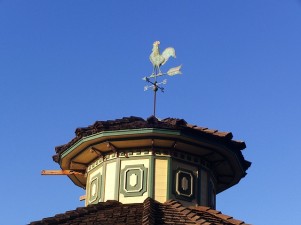 The rooster is a universal solar symbol because its crowing announces the dawn. In India, it is the attribute of Skandha, personification of solar energy. In Japan, its crowing, associated with the songs of the gods, lured Amaterasu, Goddess of the Sun, out of the cave where she had been hiding, corresponding to the manifestation of Light. Courage is the virtue that the Japanese and other Far Eastern peoples attribute to the rooster. The Chinese ideogram for rooster is Ki, homophonous to the one meaning “favourable”. Its appearance and its behaviour symbolize the “five virtues”: civil virtues, because its comb makes it look like a mandarin; martial virtues, because of its spurs; virtues associated with courage because of its conduct in battle; virtues in association with kindness, because it protects its hens; virtues related to confidence because of the accuracy with which it heralds the dawn. Furthermore, the rooster is also efficient in counteracting the evil influences of the dark night that he drives from the house if the inhabitants paint its effigy on their door. Tibetan Buddhism regards the rooster as an exceptionally ill-fated symbol. It appears in the centre of the Wheel of Life, alongside the hog and the snake, as one of the three poisons. It symbolizes lust, attachment and covetousness that put in motion the Wheel of the Law. In Europe, the rooster is seen as an image of anger, the explosive manifestation of immoderate and frustrated desires. In Greek tradition Velchanos the Cretan rooster-god was assimilated to Zeus. A rooster was standing beside Leto, pregnant by Zeus, when she gave birth to Apollo and Artemis. Thus the rooster is dedicated to solar gods as well as to lunar goddesses. Moreover, the rooster is the specific attribute of Apollo. A rooster was ritually sacrificed to Asclepios, son of Apollo and god of medicine, because the bird heralded the soul of the dead that it was to guide to the Otherworld. Asclepios is also the god who, by his healing powers, brought the dead back to life on earth. This is precisely the reason why the rooster was also the emblem of Attis, the oriental Sun-God, who died and came to life again. This also explains why the rooster is attributed to Hermes, the messenger who travels the three levels of the cosmos. The rooster, along with the hound and the horse, is among the animals offered in sacrifice in the funeral rites of the ancient Germans. In Norse traditions, the rooster is symbol of soldierly vigilance, posted on the topmost branches of the ash Yggdrasil to warn the gods when the giants, their foes, are preparing to attack. When the bird is set on church spires, it assumes the role of protector and guardian of life. It is also an emblem of Christ, like the eagle and the lamb, symbol of Light and resurrection. In the Book of Job, the rooster is the symbol of God-given intelligence while the ibis is the symbol of wisdom. The Talmud makes the rooster a master of courtesy because it heralds his Lord the Sun with its crowing. In Islam, the rooster enjoys a particular veneration. The Prophet himself asserts that the white rooster is his friend because it announces the presence of the Angel. Moreover, the Prophet is said to prohibit cursing the rooster, which calls to prayer. In dream analysis, both snake and rooster are interpreted as symbols of time.
The rooster is a universal solar symbol because its crowing announces the dawn. In India, it is the attribute of Skandha, personification of solar energy. In Japan, its crowing, associated with the songs of the gods, lured Amaterasu, Goddess of the Sun, out of the cave where she had been hiding, corresponding to the manifestation of Light. Courage is the virtue that the Japanese and other Far Eastern peoples attribute to the rooster. The Chinese ideogram for rooster is Ki, homophonous to the one meaning “favourable”. Its appearance and its behaviour symbolize the “five virtues”: civil virtues, because its comb makes it look like a mandarin; martial virtues, because of its spurs; virtues associated with courage because of its conduct in battle; virtues in association with kindness, because it protects its hens; virtues related to confidence because of the accuracy with which it heralds the dawn. Furthermore, the rooster is also efficient in counteracting the evil influences of the dark night that he drives from the house if the inhabitants paint its effigy on their door. Tibetan Buddhism regards the rooster as an exceptionally ill-fated symbol. It appears in the centre of the Wheel of Life, alongside the hog and the snake, as one of the three poisons. It symbolizes lust, attachment and covetousness that put in motion the Wheel of the Law. In Europe, the rooster is seen as an image of anger, the explosive manifestation of immoderate and frustrated desires. In Greek tradition Velchanos the Cretan rooster-god was assimilated to Zeus. A rooster was standing beside Leto, pregnant by Zeus, when she gave birth to Apollo and Artemis. Thus the rooster is dedicated to solar gods as well as to lunar goddesses. Moreover, the rooster is the specific attribute of Apollo. A rooster was ritually sacrificed to Asclepios, son of Apollo and god of medicine, because the bird heralded the soul of the dead that it was to guide to the Otherworld. Asclepios is also the god who, by his healing powers, brought the dead back to life on earth. This is precisely the reason why the rooster was also the emblem of Attis, the oriental Sun-God, who died and came to life again. This also explains why the rooster is attributed to Hermes, the messenger who travels the three levels of the cosmos. The rooster, along with the hound and the horse, is among the animals offered in sacrifice in the funeral rites of the ancient Germans. In Norse traditions, the rooster is symbol of soldierly vigilance, posted on the topmost branches of the ash Yggdrasil to warn the gods when the giants, their foes, are preparing to attack. When the bird is set on church spires, it assumes the role of protector and guardian of life. It is also an emblem of Christ, like the eagle and the lamb, symbol of Light and resurrection. In the Book of Job, the rooster is the symbol of God-given intelligence while the ibis is the symbol of wisdom. The Talmud makes the rooster a master of courtesy because it heralds his Lord the Sun with its crowing. In Islam, the rooster enjoys a particular veneration. The Prophet himself asserts that the white rooster is his friend because it announces the presence of the Angel. Moreover, the Prophet is said to prohibit cursing the rooster, which calls to prayer. In dream analysis, both snake and rooster are interpreted as symbols of time.
Image Credits: By nightowl | pixabay | CC BY PD
spacer

Galo tribe
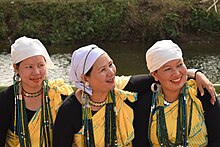
Galo women in traditional dress
|
|
| Regions with significant populations | |
|---|---|
| Arunachal Pradesh | 79,327 |
| Languages | |
| Galo | |
| Religion | |
| Donyi Polo & Christianity | |
| Related ethnic groups | |
| Tani | |
The Galo are a central Eastern Himalayan tribe, who are descendants of Abotani and speak the Tani Galo language. The Galo people primarily inhabit West Siang, Lepa Rada, and Lower Siang districts of modern-day Arunachal Pradesh state in northeastern India, but they are also found in the southwestern side of East Siang district, the southeastern side of Upper Subansiri district, as well as in some small pockets in Itanagar. Other names which have been used to reference the Galo in the past include Duba, Doba, Dobah Abor, Gallong Abor, Galong, Gallong Adi, etc. The Galo have been listed as a scheduled tribe under the name Gallong since 1950.[1]
Folklore in relation to resource use and management
The fact that Turi or eri, according to Galo’s wisdom, can be the common ancestor of Tani (the first human-being and the ancestor of human-beings), Taki (the ancestor of spirits) and Tanyo [the ancestor of cat families which include Nyote (tiger), Nyopak-akar (leopard), Nyoke (Panther), Nyoli, Nyomuk, Nyoji (various species of wild cats)] signifies the harmonious relationship that the Galo society shares with other living and non-living forms.[2] As the saying goes, tumsi nyomara lo, hottum elam go hore lelam go doma rem yobe nyine hage ha rem. Tumsi nyomra irga kama, isi opo kama rem mopin e irga kama. Sile boso gobo golak go goka kichin gatugo ao go kama rem nyiram re.[2] That is, ‘O human! What worth is human life when forests without flora and fauna, rivers without fish’. Instead of assuming themselves as the ‘possessor’ of nature, their core world view of ‘community of beings’ places resource use and its management, apart from providing material sustenance, as a binding agent between human-nature relationship, human-human relationship and human-nature-supernatural relationship.[2] Moreover, resources also act as a metaphysical medium to appease supernatural beings/spirits. Nature, according to Galo’s worldview, has also unknown and destructive dimensions. Thus, periodic rituals with respect to land, water and forests becomes mandatory to pacify the anger of this incomprehensible element of nature, which manifests in the form of spirits.
The constant squabbling over the ownership of land between Tani (the mythical forefather of the Galos) and Taki (the spirit brother of Tani) led to division of ownership of resources: the domesticated ones (one that is owned by humankind) and the wild ones owned by ethereal beings/spirits. In order to resolve the conflict, Donyi Jilo, a respected priest, intervened and divided the land into momen (the domesticated one) and modir (vertical/land not suitable for human use).

Galo da Madrugada (Dawn’s Rooster) invades the center of the city in such a way that it is no longer known who is Galo, who is looking at Galo, who is not Galo, where is Galo. The rooster is the people. They are the people who dream, sing, play, without prejudice and without isolation ropes, under the sun or the rain, with money or without money. “(Paulo Montezuma -” The Carnivals and the Rooster “- Recife, 1985)
|
Paulo: Boy’s name Meaning, Origin, Popularity |
|
montezuma | Etymology, origin and meaning of phrase montezuma by etymonline |
 On February 4, 1978, around 75 people dressed as lost souls walked through the streets of the São José district, in the center of Recife. With their bags of confetti and streamers, they were accompanied by a Frevo orchestra made up of 22 musicians. Thus was born the Clube das Máscaras, the Galo da Madrugada, which woke up before commerce, at sunrise.
On February 4, 1978, around 75 people dressed as lost souls walked through the streets of the São José district, in the center of Recife. With their bags of confetti and streamers, they were accompanied by a Frevo orchestra made up of 22 musicians. Thus was born the Clube das Máscaras, the Galo da Madrugada, which woke up before commerce, at sunrise.
Block of Illusions
The Bloco Carnavalesco Misto Bloco das Ilusões is a Bloco Lírico* founded on March 15, 1985, by Carminha Freire, wife of Enéas Freire (founder of Galo da Madrugada), and other wives of directors of Galo da Madrugada, who would later become you become the first shepherdesses (or flabelistas – name given to the revelers, who are also responsible for holding the block’s flabel).
The emergence of the block occurred through a coincidence of guesses, when in the first meeting at the former headquarters of Galo da Madrugada, on Rua Padre Floriano, a barbecue was held to choose the name. No one could speak their idea to another person, putting their choice on paper, only to present it later. The name “illusões” appeared four times among the chosen options.
Flabellum of Illusions
| Cry mandolin Cry guitar My heart is like this… Ah, beautiful shepherdess with such a soft voice Sing my verse, my melody While there is time to sing Ah, living like this is not dreaming for nothing I am part of these good people |
Who still fly Behind the moonlight See! My Recife was decorated too much Look! Even the river stopped flowing Just to see my notebook of memories With a flag made of illusions Taking me back to you |
Service
The Bloco das Ilusões Carnival Mix is a Bloco Lírico* founded in
Currently, the Bloco das Ilusões has 50 members, who perform their marching tune every year at Carnival Rehearsals, at the headquarters of Galo da Madrugada. To join the group, interested parties should contact Soledade at 81 98590-2989. The interested party must comply with the internal regulations of the block. Applications can be made any day of the year.
*Bloco Lírico – Also called blocks of wood and rope, the lyrical blocks are groups that revive the old carnivals with the lyricism of their songs and the tradition of their banners. According to a column by Jairo Cabral, director of Ceroula de Olinda, they originated from the idea of producing a civilized street carnival, along European lines, stimulated by the Recife petty bourgeoisie, which did not have access to the elite’s closed carnival, held in the halls of traditional social clubs. The first blocks date back to 1920, inspired by the pastoral and popular European theater, but it was with the foundation of Bloco da Saudade, in 1974, that the name gained strength and is still passed down from generation to generation.
spacer
Enéas Freire Palace Headquarters
The Enéas Freire Palace, which bears the name of the creator and one of the founders of the Clube das Máscaras, Galo da Madrugada, was inaugurated at Rua da Concórdia, 984, on December 2, 2008, to the strong commotion of all those who make the greatest world block. That’s because the date was also Enéas’s birthday and despite the structure being ready earlier in the same year, it was on the birthday of the “father of the Rooster”, who had died in June, that the construction was presented to the public.
Currently, the headquarters of Galo da Madrugada have the program “Galo – Alegria o Ano Inteiro”, which promotes festivities that value Pernambuco culture not only during Carnival, but during the twelve months of the year. One example is the preview Quinta no Galo, which starts its editions in the second semester and continues until the eve of Saturday by Zé Pereira. The party features main attractions and guests, as well as multicultural groups, such as masked clowns from Galo, Maracatu Rural (Baque Solto), Maracatu from Baque Virado, Caboclinhos, group of dancers from Frevo, Bloco Lírico and costumes from Galo da Madrugada.
Pernambuco
Pernambuco is a state of Brazil, located in the Northeast region of the country. With an estimated population of 9.6 million people as of 2020, making it seventh-most populous state of Brazil and with around 98,148 km², being the 19th-largest in area among federative units of the country, it is the sixth-most densely populated with around 89 people per km².Wikipedia
Capital and largest city:Recife
Governor:Raquel Lyra (PSDB)
Vice Governor:Priscila Krause (Cidadania)
|
||
|
Pernambuco – Wikipedia |
||
| The northeast section of Brazil has some of the country’s oldest archaeological sites, dating back to 40,000 BC. In the region that today corresponds to Pernambuco, signs of human occupation from around 9,000 BC were identified in the regions of Chã do Caboclo, Bom Jardim, Furna do Estragon, and Brejo da Madre de Deus. In Brejo da Madre de Deus, an important necropolis was found, from which 83 skeletons were recovered.[4][5]
The Itaparica people inhabited the region and were responsible for creating stone instruments around 4,000 BC. Cave paintings in the region from around 0 AD are attributed to the Kiriri people. Other indigenous groups from before Portuguese colonization such as the Pankararu and Atikum are still present in certain parts of Pernambuco.[4] At the time of Portuguese colonization, the Tabajara, Tupinambá, and Caetés were recorded as inhabiting the area.[ |
The site, which occupies an area of 1,000 m², has architect Arinêe Fulco and engineer José Schvartz in charge of the project. The interior decoration was finalized by the architect Mário Baô, who used varied and strong colors, working with changing elements, so that the spaces can be used in flexible ways. The total investment in the work is around 1.3 million.
|
What Does The Name Arinee Mean? – The Meaning of Names |
|
Fulco – Meaning Of Fulco, What Does Fulco Mean? – ourBabyNamer |
|
jose | Etymology, origin and meaning of the name jose by etymonline |
|
schvartze | Etymology, origin and meaning of schvartze by etymonline |
|
Meaning of the name Mario – Origin and History |
|
Meaning, origin and history of the name Bao – Behind the Name |

President Emeritus
Enéas Alves Freire was the creator and one of the founders of Clube das Máscaras Galo da Madrugada . He was born on December 2, 1921, in Pátio do Terço – house number 34 -, in the São José neighborhood, in the center of Recife.
| Name Eneas – Meaning, Origin & Popularity 2022 – CharliesNames Apr 25, 2022Eneas is an e.g. Spanish variant of the Greek name Aineias (Αἰνείας) or the Latin name Aeneas, both names of the Greek and Roman mythology. He was the son of Aphrodite and Anchises. What does the name Eneas mean? Eneas means “the praised one” (from Greek “aine/αἴνη” = praise or “ainein/αἰνή” = to praise). Pronunciation of Eneas |
| Alves This interesting surname is predominantly of Scottish origin, and is a locational name from Alves in Morayshire. It is usually pronounced as one syllable, the “a” sounded long as in “alms”. The placename is believed to have been a derivative of the Gaelic “all”, white. In some instances the surname may be of Portuguese origin, and is a patronymic form of the personal name “Alvaro”, composed of the Germanic elements “all”, all, with “wer”, true. |
|
Freire Name Meaning & Freire Family History at Ancestry.com® |
Seventh and last child of the merchant and well-known lieutenant Enéas Garcia Freire and housewife Bernardina de Lima Alves Freire, the boy from São José learned to value the culture of his land since he was a child. The parents, who used to accompany the jokes in the neighborhood, carried the youngest in their arms, less than a year old, when he couldn’t even walk.
At that time, Pátio do Terço was already considered one of the main animation centers of Recife’s Carnival. Thus, we can say that Enéas was born in the “cradle of Carnival”.
| During the Dutch presence in Recife , Count Maurício de Nassau wanted to give the city a modern color. To this end, he ordered the opening of channels, the drainage of flooded land, the raising of trenches with ditches and stakes, among others, in the place where the Pátio do Terço is located.
When the Dutch were expelled, the place became known as “the road to the city, for those coming from the mainland”. Until the first decades of the 18th century , at the beginning of Rua dos Copiares (today called Rua Cristóvão Colombo), there was a niche, with an image of Our Lady, where travelers would kneel and pray a rosary to the Blessed Virgin. As the location had become an important point, the chapel of Nossa Senhora do Terço (our third lady) was built there, on the old Rua dos Copiares. (street of the copycats) As part of Recife’s carnival and cultural festivities, Pátio do Terço is the stage, on Monday nights during Carnival, for the ceremony called Night of Silent Drums , which honors the memory of the black people sacrificed in our land. |
The president of Galo died on June 9, 2008, due to cardiac arrest. In addition to the four children, he also left eight grandchildren who, along with family and friends, make up the current board of directors of the association and keep alive the dream that the eternal Enéas built and presented as a gift to Carnival in Recife.
banner
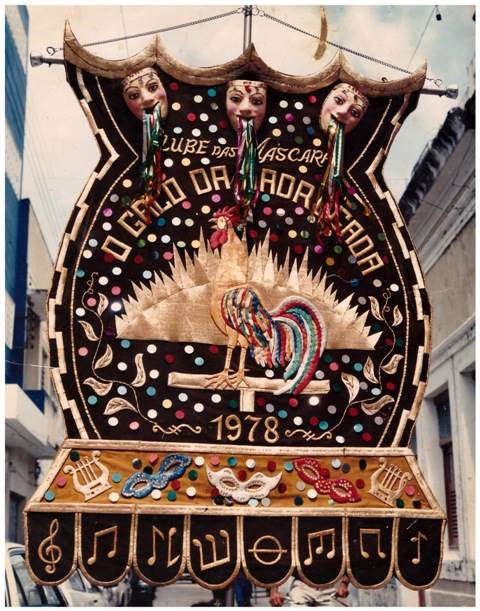 The Official Banner of Galo da Madrugada was created in 1978, after the first parade of the association, by Mauro Freire, son of the emeritus president of the Bloco, Enéas Freire. The idea was to highlight the mission of the association.
The Official Banner of Galo da Madrugada was created in 1978, after the first parade of the association, by Mauro Freire, son of the emeritus president of the Bloco, Enéas Freire. The idea was to highlight the mission of the association.
|
Mauro: Name Meaning and Origin – SheKnows |
spacer
Check out my posts on Moors:
CORSAIRS a LOOMING GLOBAL THREAT
CORSICA – What a CRAZY Place!
spacer
“After the 1st Galo da Madrugada parade, there was a meeting where they asked me to make the official banner. I imagined the significant portrait of our association and tried to transmit it with the following symbols: the Rooster crowing on the perch with the sun rising in the early morning; the masks referring to our mask club; serpentines and colorful confetti mean the dream and joy of carnival; and the musical notes our rhythm, Frevo”, explained the creator.
the standard bearer
Banner ready, now the mission was to find the ideal loader. After observing a certain young man who had won as a standard-bearer in the Contest of the City of Recife Cultural Foundation for so many consecutive times, until he received the title of hors concours, Enéas Freire, founder and president of Galo until his death in 2008, made the invitation personally.
|
Fernando – Wikipedia |
|
Zacarias: Name Meaning and Origin – SheKnows |
spacer

virtue | Etymology, origin and meaning of virtue by etymonline
Oct 13, 2021virtu (n.) “excellence in an object of art, passion for works of art,” 1722, from Italian virtu “excellence,” from Latin virtutem (nominative virtus) “virtue, goodness, manliness” (see virtue ). The same word as virtue, borrowed during a period when everything Italian was in vogue.
Virtus – Wikipedia
Virtus Virtus ( Classical Latin : [ˈwɪrt̪uːs̠]) was a specific virtue in Ancient Rome. It carries connotations of valor, manliness, excellence, courage, character, and worth, perceived as masculine strengths (from Latin vir, “man”). It was thus a frequently stated virtue of Roman emperors, and was personified as a deity— Virtus .
spacer
virtu noun vir· tu ˌvər-ˈtü ˌvir- variants or vertu ˌvər- ˌver- 1 : a love of or taste for curios or objets d’art 2 : productions of art especially of a curious or antique nature : objets d’art Word History Etymology Italian virtù, literally, virtue, from Latin virtut-, virtus First Known Use 1722, in the meaning defined at sense 1 Time Traveler
virgin (n.)

What does fides mean in Latin? – wordhippo.com
What does fides mean in Latin? English Translation faith More meanings for fides faith
spacer

Translation of vt from Latin into English – LingQ
vt – Latin = as the
luceat
luceat (Latin) Verb
- Inflection of lūceō (third-person singular present active subjunctive)
This is the meaning of lūceō:
luceo (Latin)
From Proto-Italic *loukēō, from the root of lūx (“light”) or from Proto-Indo-European *lowk-eyo-, a verb that is derived from *lewk-.
Verb luceo
- I shine
- (of the day) I dawn, become light
- I show through; I become visible
- I am conspicuous, apparent, evident
luceat – shine
OMNIBUS – for all or ALL
spacer
| carnal (adj.) c. 1400, “physical, human, mortal,” from Old French carnal and directly from Latin carnalis “fleshly, of the flesh,” from carnis “of the flesh,” genitive of caro “flesh, meat,” probably originally “a piece of flesh” (from PIE root *sker- (1) “to cut”).The meaning “sensual, pertaining to the passions and appetites of the flesh” is from early 15c.; that of “worldly, sinful, not spiritual” is from mid-15c. Carnal knowledge “sexual intercourse” is attested from early 15c. and was in legal use by 1680s. Medieval Latin carnalis meant “natural, of the same blood,” a sense sometimes found in Middle English carnal. |
| carnivorous (adj.) “eating or feeding on flesh,” 1640s, from Latin carnivorus “flesh-eating, feeding on flesh,” from caro (genitive carnis) “flesh” (originally “a piece of flesh,” from PIE root *sker- (1) “to cut”) + vorare “to devour” (from PIE root *gwora- “food, devouring”). Related: Carnivorously; carnivorousness; carnivoracity. |
| carnalite (n.) “worldly minded man, one addicted to fleshly practices,” 1570s, from carnal + -ite (1). Carnalist (1620s) also was used. |
| val (Dutch) From the verb vallen (“to fall”).
val – Noun (masc.) (pl. valen, diminutive valletje) |
| carnival (n.) 1540s, “time of merrymaking before Lent,” from French carnaval, from Italian carnevale “Shrove Tuesday,” from older Italian forms such as Milanese *carnelevale, Old Pisan carnelevare “to remove meat,” literally “raising flesh,” from Latin caro “flesh” (originally “a piece of flesh,” from PIE root *sker- (1) “to cut”) + levare “lighten, raise, remove” (from PIE root *legwh- “not heavy, having little weight”).Folk etymology has it from Medieval Latin carne vale ” ‘flesh, farewell!’ ” Attested from 1590s in the figurative sense of “feasting or revelry in general.” The meaning “a circus or amusement fair” is attested by 1926 in American English. |
spacer
The giant clown of the Paris Carnival, 1897
The Paris Carnival (French: Carnaval de Paris) is an annual festival held in Paris, France. The carnival occurs after the Feast of Fools and has been held since the 16th century or earlier, with a long 20th century interregnum.
History of Carnival in Paris
The Carnival of Paris is a festival with a very long history in the French capital. Nicolas de Baye wrote in his journal in 1411:
“Monday, the 22nd of February, the royal household, in order to observe the Lenten feast, which is tomorrow, will be rising before dawn [to prepare]”.
The staying-power of the Carnival of Paris, the elements that have made it an institution for millions of years, is based on an unbroken tradition of “festive and carnival societies“ (similar to the samba schools in Rio de Janeiro, the mystic societies in Mobile or the krewes of the New Orleans Mardi Gras) and the organized involvement of certain civic groups, corporations, and trade unions. The central role of the working class is illustrated, for example, by an anonymous poem of the eighteenth century:
Always at these kinds of masquerades,
Workers take their special pleasures.
They wail, “We must watch our parades!
This is something we’ve all treasured!”
Tomorrow we’ll return to the usual grind,
When Mardi Gras is, sadly, over,
Food and drink will be hard to find
And we’ll do our best to recover.
 Workers have always played a central role in the celebrations. What is less known is the fact that the Carnaval de Paris is also, traditionally, the feast of the Paris police. During the nineteenth century, the involvement of butchers, launderers, traders, and students became essential to the liveliness of the Carnival. The variety, the multi-class composition, of the participants is found in carnivals throughout the world. Whether in Dunkirk or Brazil, tradition, organization, and the involvement of diverse segments of the population are essential for the well-being of the party.
Workers have always played a central role in the celebrations. What is less known is the fact that the Carnaval de Paris is also, traditionally, the feast of the Paris police. During the nineteenth century, the involvement of butchers, launderers, traders, and students became essential to the liveliness of the Carnival. The variety, the multi-class composition, of the participants is found in carnivals throughout the world. Whether in Dunkirk or Brazil, tradition, organization, and the involvement of diverse segments of the population are essential for the well-being of the party.
Édouard Manet, Bal masqué à l’opéra, 1873
Until the early-twentieth century, the Paris Carnival lasted much longer than just the one day, Tuesday of Mardi Gras. In 1690, in his Dictionary, Antoine Furetière wrote these words, which apply also to Paris:
“CARNIVAL, masculine noun: time of rejoicing lasting from Epiphany until Lent. Dances, feasts, and marriages are mainly held at Carnival time.”
Sixty-two years later, in 1752, the Encyclopedia of Denis Diderot and Jean le Rond d’Alembert confirmed this impression with almost the same words Furetière used. (In fact, so close is the correspondence that, it seems, Furetière might have been Diderot’s source.):
“The carnival begins the day after Epiphany, or the 7th of January, and lasts until Lent. Dances, feasts, and marriages are mainly held during carnival.”
 However, the Carnaval de Paris has also endured a hiatus; it was interrupted between 1952 and 1997.[1] Even today, many Parisians do not know that the carnival exists. They are also ignorant of the fact that central to the carnival celebration is the appearance of certain traditional characters, stereotypes with distinctive costumes who appear every year, and that there are a number of traditional carnival jokes. These truly “old jokes” have survived from as long ago as the seventeenth century. During the hiatus the words “Carnaval de Paris” were seldom spoken. Parisians were always able to celebrate “Mardi Gras”, of course; they simply had to travel to Nice or Rio de Janeiro.
However, the Carnaval de Paris has also endured a hiatus; it was interrupted between 1952 and 1997.[1] Even today, many Parisians do not know that the carnival exists. They are also ignorant of the fact that central to the carnival celebration is the appearance of certain traditional characters, stereotypes with distinctive costumes who appear every year, and that there are a number of traditional carnival jokes. These truly “old jokes” have survived from as long ago as the seventeenth century. During the hiatus the words “Carnaval de Paris” were seldom spoken. Parisians were always able to celebrate “Mardi Gras”, of course; they simply had to travel to Nice or Rio de Janeiro.
Claude Monet, Carnaval boulevard des Capucines, 1873
A modern carnival poster made by Basile Pachkoff
The Carnaval de Paris has inspired great artists. The picture reproduced above was painted by Édouard Manet. It represents the famous masked ball at the Paris opera, which is held during the Carnival. The picture on the right is by Claude Monet, and it shows the Boulevard des Capucines where the processions take place.
Street activities
At street level, two types of event are traditionally part of the Carnival de Paris: the walk of masks, and the processions.
The walk of masks involves people in disguise in huge numbers, and the curious come to see them, at a given location at a given time. Here’s what Dulaure says of this phenomenon in 1787 :
“Rue Saint-Antoine is famous for the prodigious contest of masks held every year on the last day of the carnival, which attracts a large number of the curious.”
Other traditional events of the carnival are the parades and processions:
- The fat days occurred during “the last days of carnival”, according to Dulaure. The “fat days” started during the eighteenth century, when they began on Thursday and ended five days later, on Mardi Gras. In the nineteenth century, they were restricted to Sunday, Monday, and Mardi Gras (Tuesday) only. They end when the Promenade du Boeuf Gras (Procession of the Fat Ox) begins.
-

Boeuf Gras translates roughly from the French to Fat Ox or Farewell To Meat. Mardi Gras means Fat Tuesday, or the day before Ash Wednesday, when traditionally fat oxen were paraded through the streets of French towns in celebration of one last fling before the great Lenten fast.

Procession of the sacred bull in Ancient Egypt/ Frederick Arthur Bridgman
Apis (deity) – Wikipedia
In ancient Egyptian religion, Apis or Hapis (Ancient Egyptian: ḥjpw, reconstructed as Old Egyptian */ˈħujp?w/ with unknown final vowel > Medio-Late Egyptian ˈħeʔp(?w), Coptic: ϩⲁⲡⲉ ḥapə), alternatively spelled Hapi-ankh, was a sacred bull worshiped in the Memphis region, identified as the son of Hathor, a primary deity in the pantheon of ancient Egypt. - Twenty-one days after Mardi Gras is the Thursday of Mid-Lent (Mi-Carême). Mid-Lent is also called the Feast of Laundresses, for it is the feast day of their parade, and of their queens, and of the Queen of Laundresses. They inspired, during the last years of the nineteenth century, other guilds and unions to elect their own queens. Also known as the ‘’Vachalcade’’. Originally intended to be an annual event, it only lasted two seasons.
Bazas Fatted Ox Festival, February 16, 2023, Bazas.
Bazas Fatted Ox Festival
Cathedral Square Bazas Gironde
2023-02-16 – 2023-02-16
EUR 35 The Bazadaise breed is the pride of the region with its renowned gastronomy. Since 1283, every Thursday preceding Mardi Gras, the city of Bazas has hosted the famous “Fête des Bœufs Gras” during which the finest specimens of the Bazadaise breed are presented. Adorned with ribbons and flowery crowns, the oxen parade to the sound of fifes and drums in the streets of the city, before being judged by experts.er
Modern day carnival
In 1997 the carnival was restarted by the Les Fumantes de Pantruches and Droit à la Culture groups. They are still quite active and hold several events each year – Carnaval de Paris and the Carnaval des Femmes de Paris,[2] of which the poster on this page is an example.
|
Les Fumantes de Pantruches = Pantruche smokers |
|
|
Droit a La Culture = Right to Culture droit | Etymology, origin and meaning of phrase droit by etymonline |
|
|
9 Paris Nicknames You Need to Know – ViaTravelers |
|
|
Since 2002 a Carnaval has also been run by MACAQ – the Movement for the Cultural and Artistic Liveliness of the Quarter.[3] There were around 1500 participants in 2007, with 10,000 spectators, which grew to 15,000 participants and 40,000 spectators in 2009, according to the organizers. In 2010 the carnival coincided with Valentine’s Day and Chinese New Year, the theme was improbable couples. It set off from Place Gambetta and went via Belleville, where it met the Chinese New Year parade,[4] to République, before arriving at Hôtel de Ville.[5]
spacer
If you have not viewed my post on the Mardi Gras in New Orleans, you really should view it Here:
Much More Than Beads, Jazz and Parades!
spacer
Nice Carnival France History And What To Expect
by Velma Battle.
What Is The Nice Carnival In France?
The Nice Carnival is France’s largest and one of the most famous in the world. It is held annually in February and is one of the most popular events on the French Riviera, attracting hundreds of thousands of spectators each year.
spacer
History Of The Nice Carnival
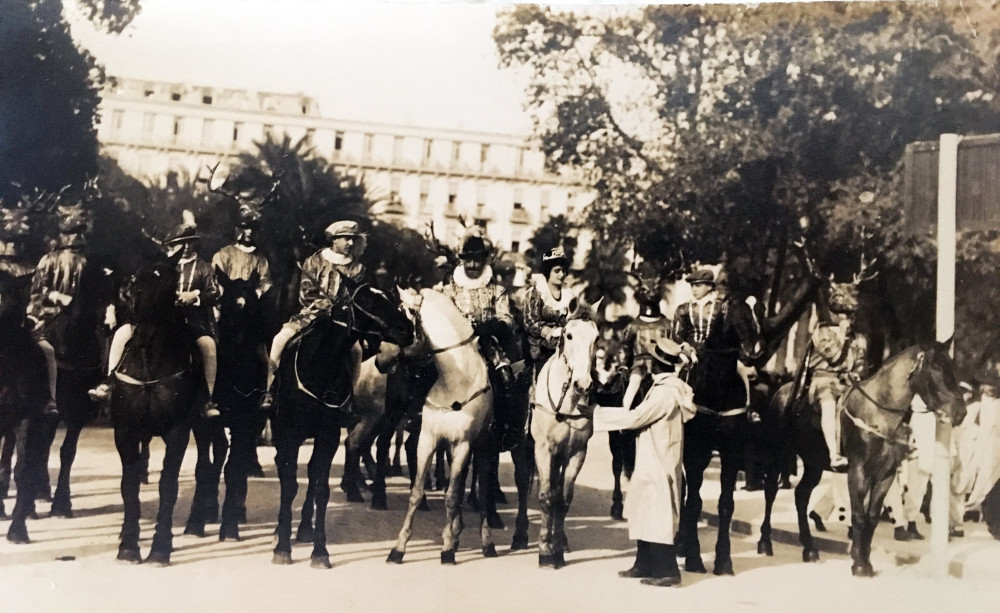
Men riding their horses at the nice carnival festival
COPYRIGHT_BUG: Published on https://www.bugbog.com/festivals/nice-carnival-guide/ by Velma Battle on 2022-04-06T02:09:19.801Z
The Nice Carnival first appeared in history in 1294. Certainly, throughout the Middle Ages, Nice participated in European Carnival customs, when the celebrations preceding Ash Wednesday provided a chance for the oppressed peasant class to mock the aristocracy. The masks and disguises shielded them from prosecution for what would have been a beheading charge under normal circumstances. Naturally, things got out of hand, and the Church stepped in, chasing Carnival revelers indoors.
Why Is Nice Carnival Celebrated In France?
In 1830, the public festival resumed to honor visiting nobility and continued as a yearly free-for-all in which people pelted each other with flour and eggs. The Nice Carnival in its contemporary form dates all the way back to 1873, when painter Alexis Mossa created grotesque, absurd creatures and mounted them on floats. Although conflict has disrupted the Carnival on multiple occasions, it has persisted to this day.
Carnival Events
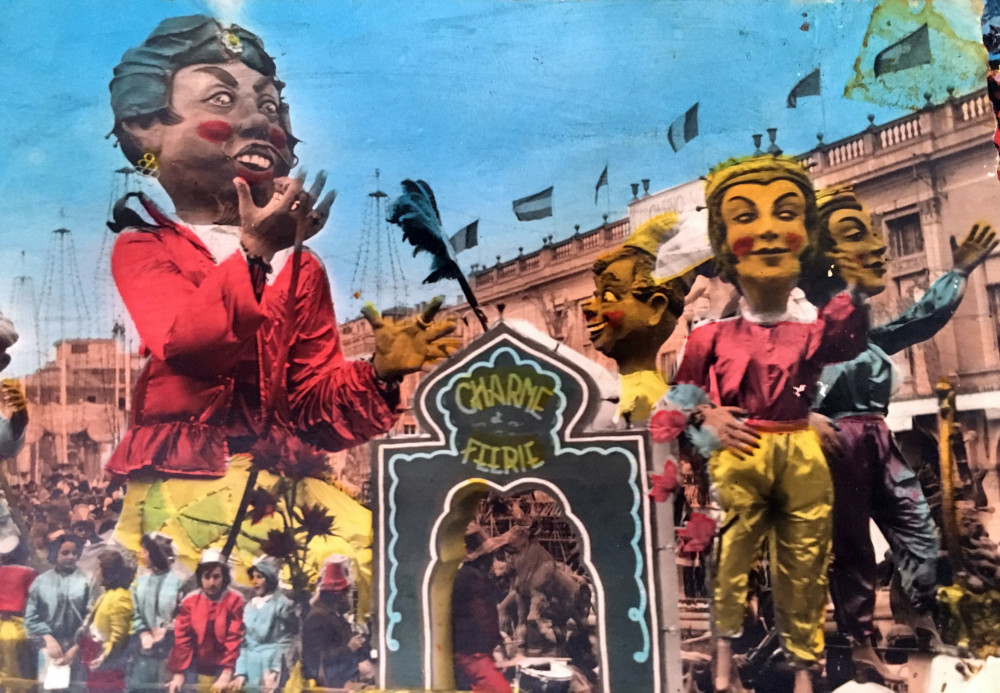
Parades of floats at the nice carnival festival
Each carnival features parades of floats focusing on a particular subject, and the floats frequently, but not always, have subtle political implications. Throughout the Carnival season, parades take place three or four afternoons or evenings a week. The majority of parades are free. Along with the floats, there is the “Bataille des Fleurs,” during which floats adorned with precisely placed flowers glide through the streets while young men and women throw flowers at the audience. Admission to the Bataille des Fleurs is always free. The final weekend of the Carnival features the “Bartenders Race,” and the Carnival King is burned in the sea on the final night, followed by fireworks. He’ll be returning the following year!
Parade Of Lights, Non Merci!
They had a peek from the outside at the Corso Carnavalesque illuminé to determine whether it was worth paying to enter. That was not the case. Essentially, it had the same floats as the afternoon Corso Carnavalesque (that’s our favorite Mantis lit up) with some fairly spectacular illuminations, but it was quite chilly at 7C (hey! that’s considered near freezing on the Côte d’Azur!) and, worst of all, the Massena seats were subjected to an over-amplified pundit shrieking incoherently. paid on a per-word basis, apparently. If you’d paid for a seat there, you’d have taken serious measures. As is, they simply walked away.
Conclusion
It is a major festival on the French Riviera and dates all the way back to ancient times when pagans celebrated the winter solstice. They would celebrate the end of winter, the entrance of spring, and the harvest with debaucherously and riotous revelry.
spacer
Fasching is Germany’s version of Carnival
If you’re in Germany during Fasching, you’ll know. Many streets come to life with colorful parades, loud music, and celebrations around every corner.
It’s Carnival, German style.
Even if you’ve experienced Carnival in New Orleans during Mardi Gras, there’s still a lot to learn about how the German-speaking countries do it.
Here are five frequently asked questions about the popular celebration throughout Germany, Switzerland, and Austria.
What Is Fasching?
Actually, a more precise question would be: What is Fasching, Karneval, Fastnacht, Fasnacht, and Fastelabend?
They are all one and the same thing: pre-Lenten festivities celebrated in grand style, mostly in the predominantly (Roman) Catholic regions of the German-speaking countries.
The Rhineland has its Karneval. Austria, Bavaria, and Berlin call it Fasching. And the German-Swiss celebrate Fastnacht.
Other names for Fasching:
|
|
You mean as in Fasching, the German carnival?
It’s originally from Vastschang or Fastschank in Middle German, which meant the drink(s) taken to kick off the period of fasting before Lent (the 6 week period of fasting beginning in earnest on Ash Wednesday) – it’s a compound word whose first element, Fast, is akin to the modern German Fasten meaning in English fast (a period of abstaining from food), and the second element schank is in modern German ‘schenken’, to pour, also akin to the English dialect to skink = to pour out, and to the -cheon part of the English word luncheon, a collapsed word which was originally nonaschench, meaning ‘noon skinking’ = a midday pouring =a drink at noon.
Incidentally, to ‘fast’ is actually the same word as the other ‘fast’, in e.g. steadfast: it comes from ‘holding fast’ in the face of hunger.
When Is It Celebrated?
Fasching officially begins in most regions in Germany on Nov. 11 at 11:11 a.m. or the day after Dreikönigstag (Three Kings Day), so on Jan. 7. However, the big bash celebrations are not on the same given date each year. Instead, the date varies depending on when Easter falls. Fasching culminates into Fasching week, which begins the week before Ash Wednesday.
How Is It Celebrated?
Soon after Fasching season opens, a mock government of eleven guilds (Zünfte) is elected, along with a Carnival prince and princess, who basically plan the carnival festivities. The biggest events are held the week before Ash Wednesday as follows:
- Weiberfastnacht: This is mainly an event held in the Rhineland on the Thursday before Ash Wednesday. The day begins with women storming into and symbolically taking over city hall. Then, women throughout the day snip off men’s ties and kiss any man who passes their way. The day ends with people going to local venues and bars in costume.
- Parties, Celebrations, and Parades: People celebrate in costume at various Carnival community events and individual parties. Carnival parades abound. It is the weekend for people to live it up.
- Rosenmontag: The largest and most popular Carnival parades take place on the Monday before Ash Wednesday. These parades come mostly from the Rhineland region. People throughout the German-speaking countries will tune in to watch the biggest German Carnival parade of all, which is held in Cologne.
- Fastnachtsdienstag: Besides some parades that are held on this day, you have the burial or burning of the Nubbel. A Nubbel is a life-sized doll made of straw that embodies all of the sins committed during Carnival season. It is buried or burned with great ceremony on Tuesday evening before everyone parties one more time until Ash Wednesday arrives.
How Did This Celebration Originate?
Fasching celebrations stem from various beliefs and traditions. For Catholics, it provided a festive season of food and fun before the Lenten fasting period began. During the late medieval times, plays were performed during the Lenten period called Fastnachtspiele.
In pre-Christian times, Carnival celebrations symbolized the driving out of winter and all of its evil spirits. Hence the masks, to “scare away” these spirits. The Carnival celebrations in southern Germany and Switzerland reflect these traditions.
Furthermore, we have Carnival traditions that can be traced back to historical events. After the French Revolution, the French took over Rhineland. Out of protest against French oppression, Germans from Cologne and surrounding areas would mock their politicians and leaders safely behind masks during Carnival season. Even today, caricatures of politicians and other personalities can be seen boldly portrayed on floats in the parades.
What Does ‘Helau’ and ‘Alaaf’ Mean?
These phrases are commonly repeated during Fasching.
These expressions are cries to state either the beginning of a Carnival event or greetings declared among participants.
|
What is the origin of Helau
The call ” Helau ” is widespread in many carnival strongholds and is therefore the most well-known of the jesters’ calls. Often it is also written with “ll”. There are numerous attempts to explain its origin: on the Lower Rhine, the ” Helau ” is said to have once been a shepherd’s call. Another explanation derives ” Helau ” from Hallelujah. Some also claim that ” Helau‘ can also mean ‘open hell’ or ‘hel open’ (hel = Germanic goddess of the underworld, from which hell developed); because carnival has been celebrated for a very long time to drive away winter and the evil spirits that came to earth at the opening of hell. They were made fun of with costumes (see Alemannic Fastnacht). (WIKIPEDIA) But here a -imho- better explanation: |
| What is the origin of “Helau”? – German Language Stack Exchange “The origins of the Düsseldorf carnival – like the carnival in Cologne or Mainz – probably go back to the Romans. However, there is no official evidence of carnival in Düsseldorf until 1833. Here, for the first time, a masquerade took place on the Burgplatz, which bore the title “Betrothal of the Hanswurst under Helau and Habuh with Anna Dorothea Petronella Weichbusen” . By this the carnival greeting “Helau” originated from a burlesque (“Fastnachtsspiel”) played in Düsseldorf in 1833, the date when carnival beacame officially mentioned there.Digging the etymology further down to the question why they used “Helau” in the burlesque may come to the point that it simply was a salutation. We have a nice Wikipedia summary on the origin of the English “Hello” (pronounced very similarly): |
The calls you’ll hear at Carnival – and what they mean“‘Alaaf’ is the easiest to explain,” says Georg Cornelissen, from the Institute of Regional Studies and History in Bonn. The origin of the Cologne ‘fool’s call’ – which today is also heard in Bonn. Alaaf is the traditional german fool’s call used during carnival in Cologne.
|
|
alaaf – Wiktionary |
|
What does اللف (allaf) mean in Arabic? |
spacer
A messy centuries-old celebration for carnival
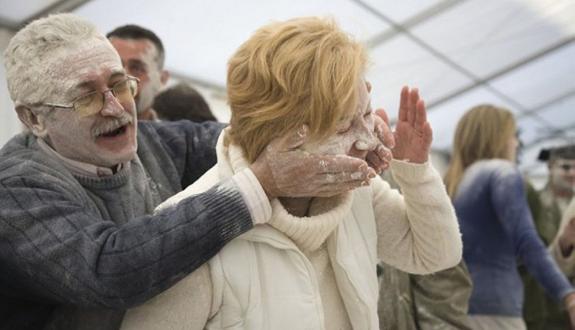
No one is safe from being floured in Alozaina. / Dtn Malaga
-
Flour and talcum powder is thrown liberally in Alozaina and Tolox this weekend as the annual carnival celebrations take place
This weekend in Alozaina, and from Sunday until Tuesday in Tolox, the annual carnival celebrations take place. These two towns have a tradition which started in the nineteenth century but possibly dates back 400 years before that.
In Alozaina they throw flour; in Tolox they throw talc. This strange festival has its roots in an old custom: young men who wished to declare their love to a girl would lie in wait and cover her with flour. Many girls chose to stay indoors that day to avoid being ‘floured’. In Alozaina there are stories of men climbing down chimneys and removing metal window grilles in order to reach the focus of their attentions.
-
ACROSS THE PROVINCE A pagan festival to mark the beginning of Lent
In the fifteenth century a legend tells the story of a dispute between an Arab girl and a Christian girl, both in love with the same man. They worked in a bakery in Tolox and the argument got out of hand with both women throwing handfuls of flour at one another.
In Tolox it is more usual to throw talcum powder and the festival has lost its amorous overtones in both towns. From midnight on Monday and throughout Tuesday in Tolox and throughout the weekend in Alozaina, residents and visitors of both sexes will be vulnerable to being covered in talc or flour, regardless of their nationality or origins.
spacer

 Each year, the little harbour town of Galaxidi in the Peloponesse is covered with more than 1.5 ton of coloured flour. This is thrown on the locales and the tourists who attend the most insane battle. The traditional flour battle symbols the end of the carnival period. The historic legacy and the causes of these fights are unknown.
Each year, the little harbour town of Galaxidi in the Peloponesse is covered with more than 1.5 ton of coloured flour. This is thrown on the locales and the tourists who attend the most insane battle. The traditional flour battle symbols the end of the carnival period. The historic legacy and the causes of these fights are unknown.Ancient Greek roots
Carnival is related to the pagan rituals of the ancient worship celebrations to Dionysus, the God of wine, agriculture, fertility, dance, and fun. The ancient Greeks held this wine and dance festival in February/March to celebrate spring. There was a parade with a Dionysos figure, fancy dress, and masks.
During the modern carnival, street parties and parades take place everywhere. The most famous carnivals in Greece are in Patras, Rethymnon (Crete), Galaxidi, Xanti and Kastoria.
The little harbor town, Galaxidi (Γαλαξίδι), is located on the south central part of Greece, north to the Peloponess. The city is covered, every year, with more than 1.5 ton of colored flour which is thrown on the locales and the mass of tourists who attend the most insane battle. The flour battle takes place on the day which is known in the Eastern Orthodox Churches as Clean Monday, the day that marks the start of 40 days of Lent until Easter.
Blacks and Whites’ Carnival (Spanish: Carnaval de Negros y Blancos), is the largest and most important festival in south Colombia. Although its geographical indication belongs to the city of Pasto it has also been adopted by other municipalities in Nariño and the southwest of Colombia.[1] It is celebrated from 2 to 7 January of each year and attracts a considerable number of Colombian and foreign tourists.
On 30 September 2009, this Carnival was proclaimed by UNESCO, as one of the Masterpieces of the Oral and Intangible Heritage of Humanity.[2]
Origins
The Carnival of Blacks and Whites has its origins in the fusion of multiple cultures and expressions, corresponding to the Andes, the Amazon and the Pacific culture. The carnival of blacks and whites was first celebrated in the 16th century in 1546. This fact characterises and distinguishes it from other similar expressions, starting with the date on which it is performed, which has a distinctly indigenous origin, since it coincides with the celebration of the Moon (Quilla), which is reminiscent of the rituals performed by the Pastos and the Quilla singas, agrarian cultures who, at harvest time, honoured the moon with dances, and in other rituals they prayed to the sun, to protect their crops.
These celebrations, with the fusion and influence of Spanish culture, gave rise to Hispanic-religious syncretism, which generated expressions of what would become the Pasto carnival. In the 19th century, the authorities prohibited these festivities to avoid indigenous uprisings, and around 1834 the festivities of the Indians with their children reappeared, the mestizos with masquerades and mainly local people’s celebrations, all duly framed in the religious calendar, mainly with the festivities of the Virgen de las Mercedes (Virgin of Mercy) (24 September) and the Immaculate Conception of Mary (8 December).
Strictly speaking, the modern carnival, arise at the dawn of an Epiphany day on 6 January 1912, based on the need to express imagination, play, friendship and sharing the joy that around that time of the year revives. In a fine and exclusive brothel in the city, the House of the Misses Robby located in the Calle Real (Royal Street, current 25th Carrera), was the place where the audacity of Don Angel Maria Lopez Zarama, renowned tailor of the city, leads him to take the French face powder of one of the most requested ladies and proceeds to gently spread the powder and some woman’s perfume among all those present with the slogan “¡Vivan los Blanquitos!” (live the Whiteys!). Soon, the companions of the master cutter and victims of the powder, join the game. Then, everyone would go out to repeat the joke with the unsuspecting parishioners exiting the Kings’ Mass from the nearby church of San Juan Bautista, repeating: “¡Que vivan los Negros y que vivan los Blancos!” (here live the Blacks and here live the Whites!)[3] that expression under the custody of Galeras was inserted with force and forever into the essence of Pasto.
Comparsa prepared for a parade, 6 January 2008.
However, other cultures and expressions have contributed to the formation of the intricate identity of Pasto’s Carnival festivities. This fact characterizes and differentiates it between similar expressions.
Its genesis is also rooted in the rituals performed by the Quillacingas, an agrarian culture, which, at harvest time danced honoring the moon and prayed to the sun, asking protection for their crops.
These ancestral celebrations, with the merger and influence of Spanish culture, give rise to syncretism Hispanic-religious, generating early expressions of what will be the Carnaval of Pasto. In the early 19th century, the colonial authorities banned the holidays to prevent Indian uprisings, by 1834 Indian festivals reappear with churumbeles, mestizos with masquerades and hullabaloo of neighbors mostly, of course all these parties properly framed in the religious calendar, mainly with the festivities of the Virgin of Mercy (24 September) and Immaculate Conception (8 December).
In those times, on the eve of the Epiphany also performed spontaneously festive the blackies’ game, mainly between whites and mestizos, because of the scarcity of black people in Pasto, the holiday contrasted the extroversion of a community marked by a peaceful and taciturn life, who had in those days an opportunity to break the rules and release the spirit.
The blackie game origin was a blacks’ “asueto” (holiday), originated in the Great Cauca, old region to which belonged Pasto. In 1607 there was a slave rebellion in Remedios, Antioquia, which caused panic among the colonial authorities. This event was remembered by the large black population in Popayán who demanded a day of rest in which they would be truly free. To preserve social peace, the Spanish Crown granted to this end 5 January:
“The Prince, Day Off for Black Slaves“. Now understanding the relationship and request of many black slaves in that province, have come to tell you that paternally hosts the request and will be granted a day off entirely to blacks and will be on 5 January, the eve of the feasts of the Holy Majesties and venerating with regard the Holy Majesty of the Black King. Dated in Madrid.” I the Prince.[4]
That news was announced by proclamation in Popayán and thus was 5 January declared free day for people of color, the black population of the capital of Cauca took to the streets dancing to African music and began to paint the famous black-white walls of that town. Later this custom was watered to the south, taking an unusual strength in the cold city of Pasto, where the chronicler José Maria Córdoba Moure, said that there are traces of it was played as early as 1854.
This is how was configured the genesis of Blacks and Whites’ game in Pasto, and that way would pass its first decade, yet lacking the inclusion of other arts, as the Great Parade of the floats, the comparsas and murgas, which would gradually will be joining the celebration, to enrich and shape the identity of this peculiar carnival.
Blacks’ Day (5 January)
At 5 January, The people play in the streets with black cosmetic.
5 January is devoted to Blacks’ Day. This day marks the date when African slaves were free to indulge their playful outbursts, the people play and dance in the streets to paint in black themselves, using cosmetic creams made for this purpose, but also use polishes and siliconed black paint. The motto of that day is: “¡Que vivan los Negros!” (Hurray the Blacks!)
By tradition, the Queen of Carnival travels through the city in a convoy, delivering cosmetic and inviting VIP tourists to join the game under the phrase: “¡Una pintica por favor!” (A pintica (paint), please!) which was used in the early days of Carnival.
The importance of this day is all urban Pastusos, vented their repressed desires, since the cosmetic serves like a mask and at the same time to homogenize all social classes and ethnic groups as one great family settled on the slopes of Taita Urcunina.
Throughout the day, many orchestras presents in various city parks (tradition adopted in the 1960s) and the local media (radio and TV) are devoted to visiting the various artisan workshops in order to discover the figures which decorate the floats for Whites’ Day Great Parade.
Whites’ Day (6 January)
With talc is performed the Whites’ Game
On 6 January this city no longer celebrates the Epiphany, but Whites’ Day or Great Parade. In contrast to the previous day, on this date, pastusos are painted white generally with talc fragrant, being used very little flour, cream or cosmetic paints.
The main attraction, as well as popular festivals in the squares and streets of the city, is the Grand Parade of nearly 7 km long on a path of about 15 km, running through the streets of downtown, the Plaza del Carnaval (Carnival Plaza) and some of the avenues of the periphery by the so-called Senda del Carnaval (Carnival Path). The majority of citizens and thousands of tourists and visitors crowd the streets to witness this parade, cheering and throwing confetti or streamers to the participants, all dancing to traditional and typical songs, such as the famous The Guaneña, El Trompo Sarandengue, The Southern Son, Chambú, Agualongo and the obligatory Sandoná masterpiece of bandsman Jorge Mideros; also are performed sayas and generally unpublished Andean compositions that premiere each year. The motto of that day is: “¡Que vivan los Blancos!” (Hurray the Whites!) And in recent years has become inevitable to hear the exclamation ¡Viva Pasto, Carajo! (Hurray Pasto, Carajo!), pronounced by locals as well by tourists.
What Is Mardi Gras?
Mardi Gras is a tradition that dates back thousands of years to pagan celebrations of spring and fertility, including the raucous Roman festivals of Saturnalia and Lupercalia. Source
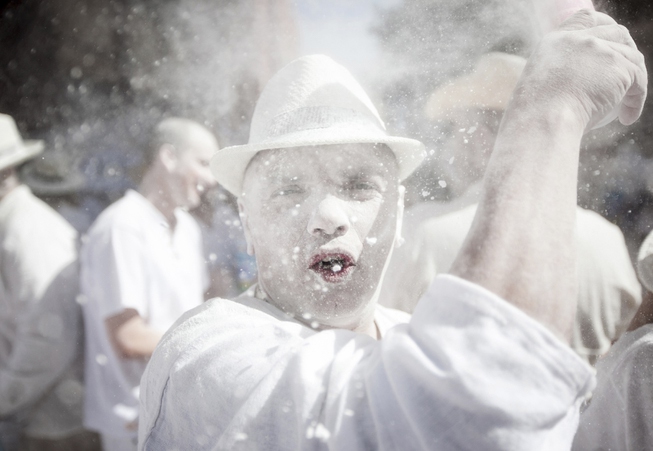
Revellers known as ‘Los Indianos‘, throw talcum powder over each other during carnival in Santa Cruz de la Palma in the Canary islands, Spain Monday March 3, 2014. ‘Los ‘Indianos’ represent the return of emigrants from the Americas, who returned to the island wealthier. (AP Photo/Andres Gutierrez)
I am not a violent man, and I detest violence of all kind. However, I do make an exception for just one day each year in the Canary Islands – Dia de Los Indianos (Day of the Indians). As many Canary Islander residents and visitors already know, Carnival is celebrated with a passion in every major town in each of the seven main Canary Islands, with the main celebrations taking place in the capital cities of the islands. These celebrations take place between January and April each year with the actual dates changing according to when Easter is celebrated; this is most annoying for holidaymakers, but take that issue up with the Vatican! The forty days before Easter, known as Lent, have always been marked by the Catholic practice of giving up meat. So the fiesta of Carnival that takes place just before Lent begins on Shrove Tuesday or Mardi Gras. Carnival means ‘goodbye to flesh’ in Latin and became a time for a wild party, and yes, I do mean wild!
There are references to Carnival in island government records as far back as February 1556, but the fiesta has grown from strong influences from South America and the Caribbean, as many Canarians left the islands after the Spanish Conquest seeking work or their fortunes in the newly discovered lands of the Americas. Some islanders were forced to leave their homes in the Canary Islands by the Spanish government, as it wanted more people to settle in the Spanish colonies in the Americas. Later, many Canary Islanders returned home, having made their fortune, dressed in Cuban-style white panama hats, and carrying large suitcases full of money. These newly wealthy emigrants were so full of their own self-importance, bragging about their riches, that they became the target of Carnival jokes. On the small Canary island of La Palma they hold a unique fiesta called Fiesta de Los Indianos – The Festival of the Indians – and now often called the White Party. On the Monday before Shrove Tuesday or Mardi Gras, the city of Santa Cruz de La Palma celebrates Los Indianos Fiesta. This is a celebration of those who emigrated from the island many years ago, particularly for islands in the Caribbean and South America and then returned having made their fortune. The fiesta is a representation of people wearing white suits and costumes of an earlier colonial period; some portray the wealthy and some are their servants. The parade takes place through the streets of the capital to the sound of Latin American music. The main event of the day is the Batalla de Polvos de Talco when bags of talcum powder are thrown at anyone standing nearby. So, by the end of the battle, most people have white hair and faces, as well as white clothes. The traditions of this important part of La Palma’s Carnival have been ‘borrowed’ over the years and now play a full part in the Carnival activities of the other Canary Islands. On Carnival Monday, the streets of Santa Cruz de La Palma, as well as Las Palmas de Gran Canaria, will fill with thousands of white-clad revellers and huge clouds of talcum powder in this eccentric celebration. Now, that is what I call a real fight and, hopefully, no one gets hurt! Maybe I should suggest this to the United Nations as a way of settling international disputes.
spacer

Powder Day is the final day of the Tolox carnival.
Powder Day or Day of the Powder (Spanish: Día de los Polvos) is celebrated in the southern Spanish village of Tolox on Shrove Tuesday, the final day of the annual Tolox carnival. This local tradition involves the throwing of talcum powder at one another. One reason given for the custom is that it takes place the day before Ash Wednesday on which the priest declares to the faithful “Remember, man, that you are dust, and unto dust you shall return”. A more likely origin of the tradition is said to have its roots in a Christian/Moorish riot in the 16th century when Tolox, then under Christian control, had a large Moorish population. During Christmas of 1539 there was civil strife between the predominantly Moorish peasants and the Christian landholders. One chronicler states that this custom originated in a dispute between a Moorish and a Christian girl who were in love with the same man. Both worked in a bakery and as the argument grew more heated, they ended up throwing all the flour they could find at each other. In years gone by, the custom evolved that young men wanting to request their girlfriends’ hand in marriage would throw flour at them. Girls not wishing be subjected to this would refrain from going out on the streets, forcing the boys to come up with ingenious ways to powder their target. A young man would dust his hands with flour and try to enter a young girl’s house and smother her face with flour. If doors and windows were closed, it meant he was not desired by the girl. If the lad was still keen, he had to smartly outwit her by climbing to the roof or breaking windows and doors to get her smeared with the flour, thus winning her heart in a symbolic way, or simply to impress her. Nowadays this tradition especially appeals to the young people who hurl talcum powder instead of flour at each other, without preference or distinction as to gender or origin, until they are completely covered with it. Many outsiders come to Tolox to take part in this peculiar fiesta. Up to 3,000 kilograms have been known to be thrown in the village. A similar custom takes place in Alozaina, in which hundreds of people celebrate the “hariná”, in remembrance of the times when their ancestors covered young women with wheat flour from the mills to show their love. (en)

spacer
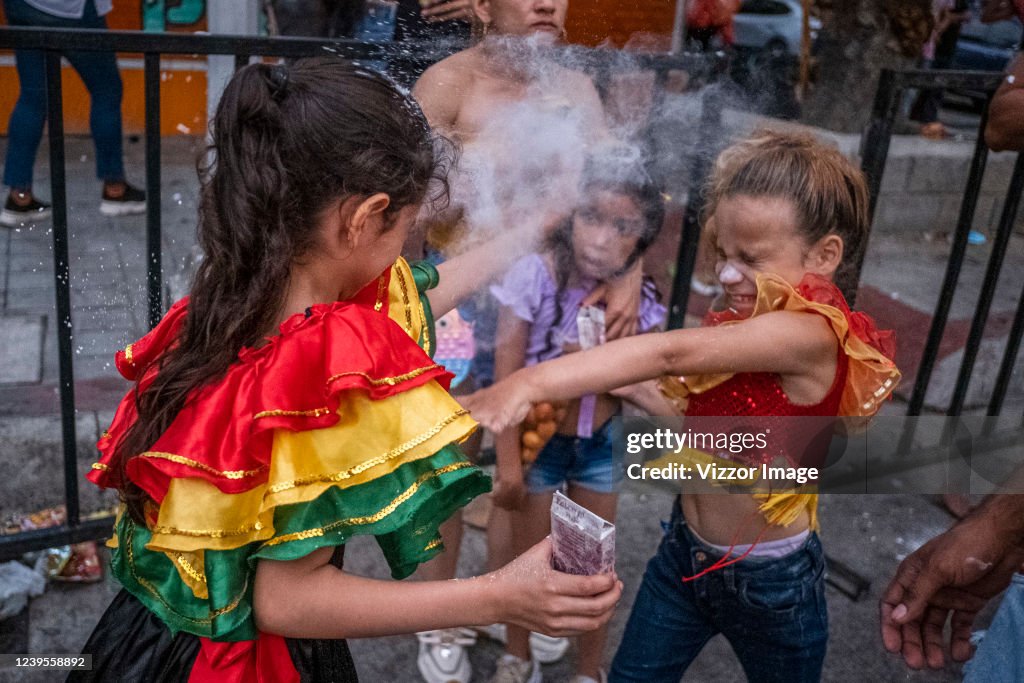
Barranquilla’s Carnival 2022
spacer
Do you know what is holi in India? The Holi Festival of Colors in India is a celebration of the victory of good over evil, the destruction of the demoness Holika. It is celebrated every year on the day after the full moon in the Hindu month of Phalguna which is early March. People celebrate the start of spring and other events in the Hindu religion; they march the streets and spray people with colored powders while dancing and singing.
What is the Holi Spirit | Holi Festival India Historical Background
Although it is a Hindu festival, it is popular among non-Hindus. People gather the night before Holi and perform religious rituals and then pray for the destruction of their internal evil. The next morning people start the real carnival traditions and smear each other with colored powders; they sometimes use water guns and water-filled balloons for more fun. Groups of people march the streets with drums and other instruments, singing and dancing. People also gather with their families and friends to color each other and share Holi delicacies.
The event lasts for a night and day, from the evening of the full moon (Purnima). Holika Dahan, the burning demon Holika, is the first evening of the event. On this night, people gather, perform religious rituals on a bonfire and pray that the evil inside them is destroyed the way Holika was killed in the fire.
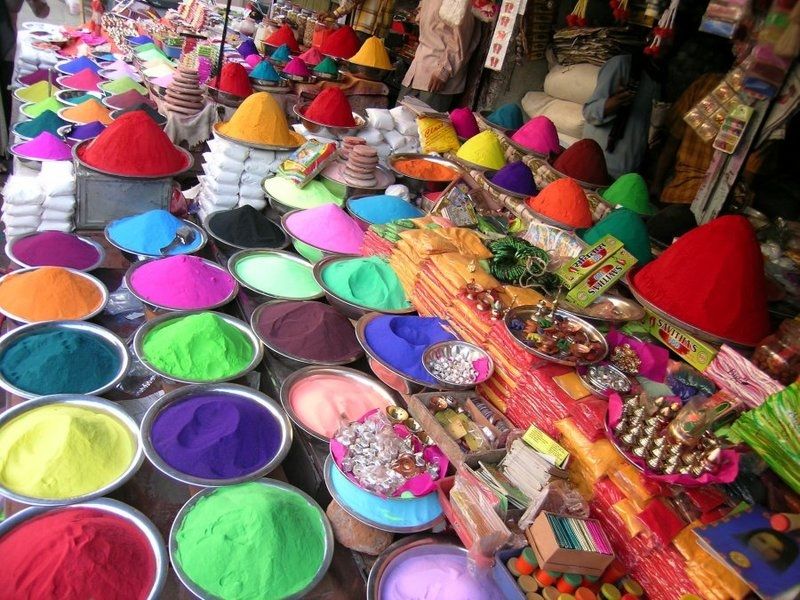
The Original Story behind the Holi of Colors
The festival of Colors is celebrated all over India since ancient times. Originally, the festival was an agricultural festival, celebrating the arrival of spring. It represents throwing off the gloom of winter and enjoying the liveliness of spring. Burning Holika is celebrated as Holi.
The morning after also known as Rangwali Holi is where people smear each other with colors and enjoy delicious gujiyas together, sharing the love.
The Legend of Holi
The Festival is based on the Hindu legend Holika, the female demon and the sister of the demon Hiranyakashayap. It is believed that Hiranyakashayap was the ruler of the universe and also superior to all gods. However, Hiranyakashayap’sHiranyakashayap’s son Prahlad went against his mother by following Lord Vishnu. This action left his father with no choice but to collaborate with Holika to kill him. . Hiranyakashipu challenged Prahlad to sit on a pyre with his aunt Holika who was to be immune to fire. When the fire started, Holika was burnt to death whereas Prahlad survived without a scar.Prahlad escaped his fate with the saving hand of Vishnu while Holka died in the flames. But later on, Vishnu killed Prahlad and his mother and became King. The moral behind the story is that good always wins over evil.
The name festival of colors came from Lord Krishna’s childhood antics. Lord Krishna was a reincarnation of the Lord Vishnu, who enjoyed playing pranks on girls from the village by drenching them in water and smearing them with colors.
The significance of Holi India
The Holi has a huge cultural significance in Hindu Culture. It opens a new beginning from past error, serving as the end of the conflict, and also a day when people forget and forgive. In most cases, people pay their debt and also forgive debts embracing new deals in their lives.

How the Holi Festival of Colors is celebrated in every region across India
The Holi festival is celebrated across the whole of India with different traditions in each region. Generally, the celebration of Holi in North India, in the Golden Triangle of Delhi, Agra, and Jaipur, is more vivid than in the Southern part of India, which focuses on religion and temple rituals.
The Holi celebration is witnessed in every nook of these cities. In Delhi, on the morning of the festival, people usher in a huge carnival; young and old people, men and women, go out to streets and smear colored powders and water at each other while singing and dancing, saying Holi hai (It is Holi). The best region to celebrate Holi is in the residential neighborhoods in South Delhi. The Holi Cow Festival, known as Holi Moo Festival, is a popular modern-day Holi celebration. It is a carnival of non-toxic colors, street food, thandai (a yogurt drink with spices), dance and music.
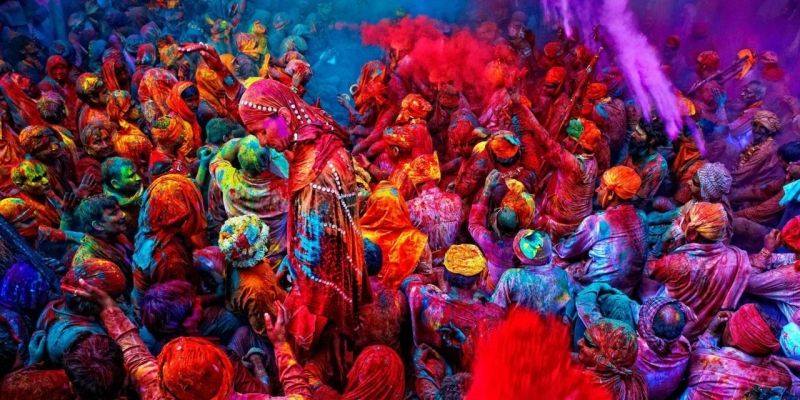
Holi celebration in Odisha and West Bengal
In West Bengal and Odisha, Holi is celebrated as Dol Jatra with complete dedication to Lord Krishna. In these regions, the mythology is entirely different. In which Lord Krishna is believed to have expressed to Radha on this day. In the event Idols of Lord Krishna and Radha are carried and smeared with colored powder, color as thrown at people and on the streets as well.
Presently the Holi Festival is celebrated not only in India but also in other states. The fun and the culture shared is an interesting experience that promotes social interaction among people of different backgrounds.
Expect a spectacular memory from the Festival of colors by having water rubbed and color powder thrown on your face. But ensure that you keep your mouth shut and eyes protected as much as possible while having the time of your life.
Holi festival celebration in Jaipur
In Jaipur, the capital of Rajasthan, the celebration of the festival is nothing special. However, the Elephant Festival is what makes it exceptional. The Elephant Festival is celebrated every year on the eve of the Holi festival, featuring elephant beauty contests, elephant polo, and elephant dance. It starts with a traditional procession of elephants, beautifully decorated with glittering ornaments and embroidered velvets.
However, the Elephant Festival was canceled in 2012, due to protests from animal rights groups. As an alternative, Rajasthan Tourism organizes an event for visitors on the lawns of Khasa Kothi Hotel. It features local Rajasthani folk music and colored powders, but with no elephants.
Holi celebration in Upadipur, Rajasthan, and Mumbai
Other regions across India celebrate Holi Festival as well. Udaipur celebrates in the most luxurious setting. There will be an elaborate procession of the royal band and decorated horses, from royal residence to Manek Chowk at the iconic City Palace. Later, people lit the fire and burn a Holika statue. It features folk dances, drums, singing, cocktails, and dinner. In Pushkar, in Rajasthan, Holi starts in the eve of Holi with a big bonfire, where local men gather around a bonfire, throw garlands and wooden branches. When the flame dies out, everyone takes pieces of burnt embers to their home as a symbol of good luck. The color festival starts on the morning of the Holi.
Moreover, in Varanasi, the holy city of India, people celebrate with much enthusiasm. The day before Holi, people light a bonfire and throw wood into the fire and throw the paste called ubtan after rubbing their bodies, as it is believed that the practice keeps them in health for the rest of the year. On the day of Holi, people play with colors until the afternoon, but some people play with mud instead. In Mumbai, the Holi festival is a major. Mumbai has the same tradition of Agra’s Vrindavan and Barsana, where they hang a pot of buttermilk, and then men form a human pyramid to break the pot. Who breaks it is called Holi king of the year.
Holi Celebration in Agra
In Agra, the festival is celebrated in the same way as it is celebrated in neighboring places such as Mathura, Vrindavan, and Barsana. In Vrindavan and Barsana, the festival is celebrated with special puja and traditional celebrations to worship Lord Krishna. The celebrations include a tradition called Matki Phod, which means breaking the pot. A pottery pot is filled with buttermilk or other diaries that are hung in the street.
Then a group of boys and men form a human pyramid, balancing on each other’s backs and shoulders to reach the pot and break it with the head of the one at the top of the pyramid. Girls and women surround them, sing songs and throw colored water to distract them and make it harder. In Barsana, people celebrate Lath Mar Holi in the Radha Rani temple. Women beat men with sticks where men protect themselves with shields.
spacer
The Pagan Origins of Lent and Ash Wednesday
It ought to be known that the observance of Lent did not exist, as long as the primitive church retained its perfection unbroken.” – Cassianus, 5th Century
Lent is the “fortieth” day before Easter and is observed in many Christian denominations. This is the six and one half week period that lasts from Ash Wednesday to Easter Sunday. During Lent Christians fast and refrain from various pleasures. This is said to be for the purpose of preparing to commemorate the passion, death, and resurrection of Christ.
Although the Holy Scriptures do ordain a period of fasting in commemoration of Christ, this was not the forty day period known as as Lent. In the Book of Leviticus it is written, “And the Lord spake unto Moses, saying, Also on the tenth day of this seventh month there shall be a day of atonement: it shall be an holy convocation (holy gathering) unto you; and he shall afflict your souls (fast)…” – Leviticus 23:26-27. Furthermore, Paul prophesied of such a doctrine concerning unholy fasting in his epistle to Timothy. I Timothy 4:1-3 reads as follows:
“Now the Spirit speaketh expressly, that in the latter times some shall depart from the faith, giving heed to seducing spirits, and doctrines of devils;
Speaking lies in hypocrisy; having their conscience seared with a hot iron;
Forbidding to marry, and commanding to abstain from meats, which God hath created to be received with thanksgiving of them which believe and know the truth.”
Paul is specifically prophesying of the rise of the Catholic faith. In Catholicism, which is the mother of all other Christian denominations, priests are prohibited from getting married. In addition, they have instituted a spring fast attributed to the suffering of Christ.However, such a fast and its rituals are rooted not in Christ but in the pre-Christian Pagan worship of antiquity.
The word Lent means “spring”and derived from the Old English word “Lencten”.Spiritually speaking, all roads lead to Babylon and such is the case in regard to the forty day spring fasts. In one version of the Babylonian myth, Tammuz the great hunter was slain while hunting a wild boar.Devotees mourned for him through weeping ceremonies for forty days.During the days of Ezekiel this ritual was even found among the Israelites. Ezekiel writes:
“He said also unto me, Turn thee yet again, and thou shalt see greater abominations that they do.Then he brought me to the door of the gate of the Lord’s house which was toward the north; and, behold, there sat women weeping for Tammuz.” (Ezekiel 8:13-14)

Worshippers of Tammuz wept with his consort Ishtar believing that his rebirth would mean the regeneration of life within nature. Similar feasts are found throughout pagan peoples of antiquity.For instance, the ancient Egyptians observed a forty day fast in honor of Osiris.
The sign of the cross rubbed with ashes is not exclusive to Constantinian Christianity; it is found throughout the ancient world and was used as prominent symbol of the pagan Gods. For example, “the Tau cross was inscribed on the foreheads of initiates into the Mysteries of Mithras.” It is also interesting to note that the act of simply sprinkling ashes directly on the head, which is also done on Ash Wednesday, was done in honor of the pagan Norse god Odin as well. The placing of ashes above the brow always occured on Wednesday, the day named in honor of Odin.
spacer
HE BEGINNING OF MANY FALSE GODS
When his father Cush died, Nimrod married his father’s wife, i.e. his mother (Semiramis). When Nimrod died Semiramis was pregnant or became soon pregnant. Some say that she was pregnant by another man; others say that it was Nimrod; other say it was Nimrod after he died and became the sun god.
Nevertheless, after she had the baby after Nimrod had died, she named her son Tammuz. Semiramis believed Tammuz was Nimrod reincarnated. (Reincarnation is believed by millions in the eastern religions and there are also many in the “Christian” Church that do too). Nimrod was a powerful king. He was the one responsible for building the tower of Babel and several other cities in Babylon (modern-day Iraq).
When Tammuz was forty years old, he was hunting in the woods and was killed by a wild boar (a pig). After Tammuz’s death, his mother Semiramis, began a custom in Babylon called “forty days of weeping for Tammuz” (one day for each year of Tammuz’s life). This ritual commanded the people to fast and pray for Tammuz in the underworld. This is what the Israelite women were doing near the temple of God that was shown Ezekiel.
Semiramis, (Nimrod’s mother and later his wife) was worshipped as the fertility goddess Ishtar. After Nimrod was murdered, he was equated with the sun as the Sun god. The Sun “mated” with the Earth each spring, and the “Rites of Spring” symbolized by the “May Pole” and “Easter” came nine moons (months) before December 25th on the “birth” of the winter Sun. This is what the twenty-five men of Judah were doing when the worshipped the Sun in Jerusalem.
Look at the months of the Jewish calendar:
The fourth month of the Jewish calendar is called Tammuz. If the Jews are God’s chosen people, why would one of their months be this evil god? This month was during the summer solstice. Tammuz is a false god for the Israelites; not for the Jews.
Semiramis’ Assyrian name is Ishtar which is where we derive the name “Easter.” That means that one of Christianity’s most important holidays, Easter, is not found anywhere in the Bible. It is another name for Semiramis—the mother and wife of Nimrod.
Nimrod was the builder of the Tower of Babel. The seventy nations of Noah were scattered by a change in languages. All seventy nations used to speak one language, but that was changed. That is why the names of Nimrod and Baal, are different in the other nations. Their languages all changed the pronunciation of his name. The seventy nations all call him by a different name in their own languages.
MODERN CHURCH RITUALS
Many compared what was done in these olden days to some of our modern church rituals.
- Why is it that the meat that is chosen to be eaten on Easter (Ishtar) is an abomination to Almighty God? Why would “Christians” choose this to be the meat of their meal? It is “ham” which, of course, comes from the pigs or hogs. Would God ever require His people to break His food laws especially during one of the most important festivals of the year? Do “Christians” kill and eat the pig that killed Tammuz, the reincarnated son of Nimrod, as the pagans did in the old days? What does a pig have to do with the sacrificial death of our Kinsman Redeemer?
- Today in the Roman Catholic Church and in some Protestant churches they celebrate forty days of fasting which is called “Lent.” These forty-days begins on what is called “Ash Wednesday” with the Cross of Tammuz being written in ash on the forehead of the “faithful”.
- Today in many cultures people make “hot crossed buns”. The people do not realize that they are inadvertently offering up cakes to the Queen of Heaven who is Ishtar (Semiramis)!
Jeremiah 7:18“The children gather wood, and the fathers kindle the fire, and the women knead their dough, to make cakes to the queen of heaven [Semiramis or Ishtar], and to pour out drink offerings unto other gods, that thy may provoke Me to anger.
- Both Nimrod and Tammuz are said to have been born on December 25th. Look at all the other foreign gods that are said to have been born on December 25th; the rebirth (reincarnation) of the sun: Horus, Osiris, Attis of Phygia, Buddha, Krishna, Zarathustra, Hercules, Mithra, Dionysus, Hermes, Adonis, Jesus the Christ, plus many others. Why do “Christians” celebrate holidays that are not in the Bible and ignore the feast days that are in the Bible? Why do “Christians” only give a little bit of credence to one of the Feast Days of God? Why do Protestants use the calendar that was created by the Roman Catholic church?
- The Roman Calendar starts the new year near the winter solstice in the middle of winter or in the Southern hemisphere in the middle of summer. It begins the new year on January 1st, instead of in the Spring.
- The Roman calendar is based on fixing the date of the holiday of Easter and not God’s Feast Day of Passover.
spacer
I hope you can already discern from all that you have seen in this post that the world is once again WORSHIPPING the SUN/BAAL/THE GOLDEN CALF/NIMROD/TAMMUZ and SIMIRAMUZ. For the MOST PART, the entire world has turned it’s back on the God of the Bible and returned to their pagan gods.
Clearly you can see BAAL represented in the Ox Promenade and the Holi Cow Festival. You saw that it was stated that Carnival was a major factor in the spread of Homosexuality. We have seen that in our own country. That is why God’s Word warned us not to cross dress. Something happens in your spirit when you do. It opens a door for demonic influence. We also see that PRIDE is a very big part of the CARNIVAL and PRIDE is a really big sin that opens up your spirit and body to demons.
We are NOT to be celebrating the lusts of the FLESH, NOR are we to be mourning for the god that was born on December 25. We are to be watching and waiting for the soon return of OUR LORD and SAVIOR, the ONLY ONE who can deliver us out of the hands of the workers of EVIL, by his BLOOD!!
We are to be sharing the good news of Salvation through the blood, so that as many as can will be saved before the SOON return of our Lord. We are to be separating ourselves for the things of the world. Praying for GOD to prepare cleanse us and prepare us so that we will be found worthy to escape the JUDGEMENT that is coming on the earth.
We should not be refraining from eating meat. The reason we , as humans, require meat, is because it reminds u that life had to be given for us to live. It points us to JESUS/YESHUA. ONLY food that has LIFE in it can nourish our bodies. No meat grown in a petrie dish or vegetable genetically altered can bring health and vigor to our bodies.
<
 ‘looking-glass’ or mirror.
‘looking-glass’ or mirror.




 Sun worship is “the most ancient of all superstitions.
Sun worship is “the most ancient of all superstitions.




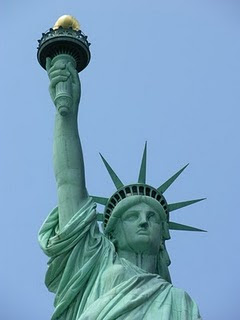


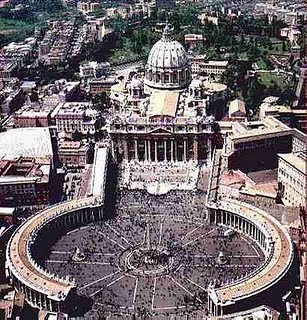
![[Flag]](https://www.crwflags.com/fotw/images/m/mk-sko1.gif)



 Aïvanhov also said, “How many there are working to create favorable conditions for the children of God?” When there will be enough, the dark forces that are acting freely for the time being because of human ambition, will be trapped and absorbed by center of the earth. This concept is represented by the Archangel Michael in Revelation that subdues the dragon. Archangel Michael is a real entity and he’ll head of the egregorous formed by the initiates and disciples of the Universal White Brotherhood and when I say “disciples of the Universal White Brotherhood” I mean everyone who works for the light of whatever religion or spiritual movement they belong (1960, reported in
Aïvanhov also said, “How many there are working to create favorable conditions for the children of God?” When there will be enough, the dark forces that are acting freely for the time being because of human ambition, will be trapped and absorbed by center of the earth. This concept is represented by the Archangel Michael in Revelation that subdues the dragon. Archangel Michael is a real entity and he’ll head of the egregorous formed by the initiates and disciples of the Universal White Brotherhood and when I say “disciples of the Universal White Brotherhood” I mean everyone who works for the light of whatever religion or spiritual movement they belong (1960, reported in 


















:max_bytes(150000):strip_icc():format(webp)/left_rail_image_languages-58a22da068a0972917bfb5ba.png)
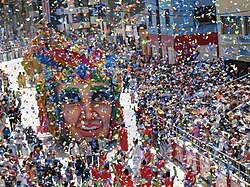




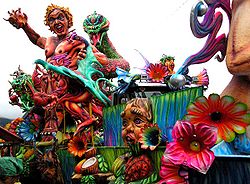
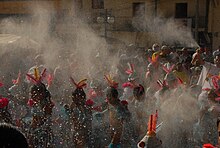
Time to rerun a post from last year: